EPS Mold
Manufacturing process of EPS molds
Design stage: Use computer-aided design (CAD) software to accurately design the three-dimensional model of the mold according to the shape, size and performance requirements of the EPS product. During the design process, it is necessary to consider factors such as the structural rationality of the mold, the selection of the parting surface, the design of the pouring system and the demoulding system. At the same time, the strength and stiffness analysis of the mold should be carried out to ensure that the mold can withstand the pressure and temperature changes during the production process. For example, when designing an EPS foam box mold for electronic product packaging, the CAD software can be used to simulate the flow process of EPS raw materials in the mold cavity, optimize the design of the pouring system, avoid problems such as insufficient filling or excessive filling, and ensure that the structural strength of the mold can meet the requirements of long-term use.
-

Foam Cast Mold
Read more -

EPP Flower Pots Mold
Read more -

Architectural Styrofoam Molding
Read more -

Molded foam circle packaging
Read more -

EPP fruit box mold
Read more -

Foam Crown Molding
Read more -

EPS lost foam mold
Read more -
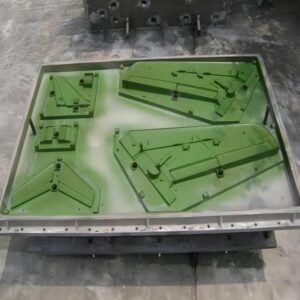
EPP Foam Airplane Molds
Read more -
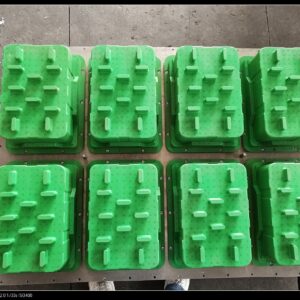
Styrofoam Plate Eps Electrical Packaging Mold
Read more -
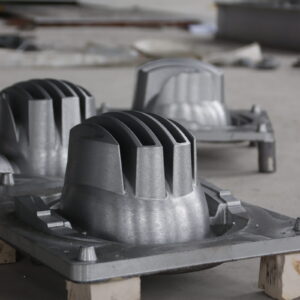
Highly Customized EPS Molds for Helmet Molds
Read more -
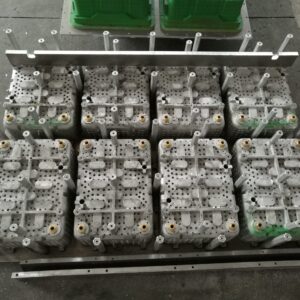
Lightweight Eps Concrete Foam Block Mold Eps Fish Box Injection Mold
Read more -
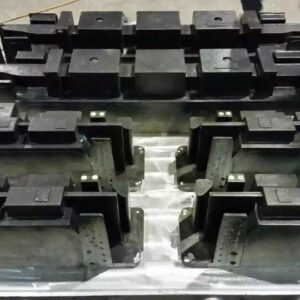
EPS ICF Mould Decorative Molding For Shape Moulding Machine
Read more
Structural features of EPS molds
Cavity and core: The cavity determines the external shape of the EPS product, while the core is used to form the internal structure or hollow part of the product.
The matching accuracy of the two directly affects the dimensional accuracy and surface quality of the product.
For example, when making EPS foam cushions for electronic product packaging, the design of the cavity and core should accurately simulate the contours and details of the product to ensure that the cushion can fit the product tightly and play a good protective role.
Parting surface: The parting surface is the surface that separates when the mold is opened. Reasonable selection of the parting surface is crucial for the demoulding of EPS products, the difficulty of mold manufacturing, and the quality of the product.
Generally speaking, the parting surface should be selected at the largest part of the product’s outer contour, and try to ensure that the product remains on the side of the moving mold for easy demoulding.
Taking the EPS insulation board mold for construction as an example, the parting surface is usually set in the middle of the board, so that the formed insulation board can be smoothly removed from the mold while ensuring the flatness of the board surface.
Gating system: The gating system is responsible for introducing the heated and melted EPS raw material into the mold cavity. It includes main runners, branch runners and gates. The main runner is the channel connecting the injection molding machine nozzle and the mold, and the branch runner distributes the melt from the main runner to each cavity. The gate is the entrance for the melt to enter the cavity. Its size and position will affect the flow rate and filling effect of the melt.
In some small EPS molds, direct gates may be used, that is, the melt enters the cavity directly from the main runner. This method has a simple structure, but may leave gate marks on the surface of the product; for large or high-appearance products, point gates or latent gates will be used to reduce the impact of the gate on the appearance of the product.
Demolding system: Since EPS products will shrink and adhere tightly to the mold cavity and core surface after cooling, a demolding system is needed to help the product smoothly leave the mold. Common demolding systems include ejector demolding, push plate demolding and pneumatic demolding.
Ejector demolding is to set an ejector on the surface of the core or cavity, and the ejector ejects the product when the mold is opened; push plate demolding is to use a push plate to push the entire product out of the core, which is suitable for some products with complex shapes that are difficult to demold with ejectors; pneumatic demolding is to use compressed air to form an air cushion between the product and the mold to demold the product.
For example, when producing EPS toy models, a combination of ejector and pneumatic demolding may be used. The product is first initially lifted from the core by the ejector, and then the pneumatic demolding is used to completely remove the product from the mold to ensure that the product is not damaged.
Material selection for EPS molds
Steel: For some EPS molds with large production batches and high requirements for mold strength and wear resistance, high-quality steels such as P20, 718, NAK80 and other pre-hardened steels are often used. These steels have good cutting and heat treatment properties. After proper heat treatment, the hardness can reach about HRC30-40, which can meet the needs of long-term production. For example, in the manufacture of EPS packaging molds for automotive parts, due to the large production batch, the use of P20 steel to make molds can ensure that the molds maintain good dimensional accuracy and surface quality during long-term use, reducing mold wear and maintenance frequency.
Aluminum alloy: Aluminum alloy materials have the characteristics of low density, good thermal conductivity, and excellent processing performance. They are suitable for making some EPS molds that have requirements on weight, relatively small production batches, or high requirements on mold heat dissipation performance. Such as 6061, 7075 and other aluminum alloys. The manufacturing cycle of aluminum alloy molds is short and the cost is relatively low. Due to its good thermal conductivity, it can speed up the cooling speed of EPS products and improve production efficiency. In some small handmade EPS molds or rapid prototyping molds, aluminum alloy materials are widely used. For example, when making EPS line molds for architectural decoration, the use of aluminum alloy materials can be easily processed and modified to meet the diverse needs of different customers for line shapes and sizes.
Other materials: In addition to steel and aluminum alloys, other materials are used in some special cases. For example, for some EPS molds with low precision requirements and temporary use, wood can be used. Wood is low-cost and easy to process, but its strength and durability are poor, and it is only suitable for small-scale production or experimental purposes. In addition, in some occasions where complex shapes need to be made and there are strict restrictions on the weight and cost of the mold, plastic or composite materials may also be used to make molds, but these materials are relatively weak in strength and heat resistance, and their application range is relatively limited.
Processing stage
Mechanical processing: According to the designed mold drawings, the mold materials are processed using CNC machining centers (CNC), electric discharge machining (EDM), wire cutting machining (WEDM) and other equipment. CNC machining can accurately process complex shapes such as mold cavities, cores, parting surfaces, etc., to ensure the dimensional accuracy and surface quality of the mold; EDM processing is suitable for processing some complex shapes and fine structures that are difficult to complete with mechanical processing, such as narrow grooves and small holes in the mold; WEDM processing is mainly used to cut the outer contours of the mold and some parts with special shapes. For example, when manufacturing the core of the EPS mold, for some cores with complex curved surfaces, the general shape is first processed by CNC, and then the details are precisely processed by EDM to ensure that the shape accuracy and surface roughness of the core meet the requirements.
Surface treatment: In order to improve the wear resistance, corrosion resistance and demolding performance of the mold, surface treatment is required after the mold processing is completed. Common surface treatment methods include nitriding, hard chrome plating, polishing, etc. Nitriding can form a nitrided layer with high hardness and good wear resistance on the mold surface, which can increase the service life of the mold; hard chrome plating can make the mold surface smoother, enhance the demolding performance, and also have a certain anti-corrosion effect; polishing is mainly used to improve the finish of the mold cavity and core surface, and reduce the surface defects of EPS products during the molding process. For example, for molds for producing high-end EPS packaging products, after polishing, the roughness of the mold surface can reach Ra0.01-0.05μm, making the surface of the molded EPS product smooth as a mirror, meeting the packaging needs of high-end products.
Assembly and debugging stage: After cleaning and deburring the processed mold parts, assemble them according to the design requirements. During the assembly process, the matching accuracy between the parts must be strictly controlled to ensure smooth opening and closing of the mold and accurate positioning. After the assembly is completed, the mold is debugged, and the molding effect of the mold is checked by trial mold, including the dimensional accuracy, surface quality, and demolding of EPS products. According to the trial mold results, the mold is adjusted and optimized, such as adjusting the size of the pouring system, modifying the parameters of the demolding mechanism, etc., until the mold can produce EPS products that meet the quality requirements. For example, when debugging a newly manufactured EPS foam board mold, it was found that the foam board had adhesion during the demolding process. After inspection, it was found that the demolding slope was not enough, so the demolding slope of the mold was appropriately adjusted. After another trial mold, the demolding was smooth and the quality of the foam board met the requirements.
EPS mold use and maintenance
Precautions for use
Temperature control: The molding of EPS raw materials needs to be carried out within a certain temperature range. Therefore, when using the mold, the heating and cooling temperatures of the mold must be strictly controlled. Generally speaking, the heating temperature of EPS molds is between 100-150℃, and the cooling temperature is between 20-50℃. Too high temperature may cause the EPS raw material to decompose and the product to deform, while too low temperature will affect the molding speed and product quality. For example, when producing EPS insulation boards, if the mold heating temperature is too high, the surface of the insulation board will turn yellow and bubble, which will seriously affect the product quality; if the cooling temperature is too low, the cooling time of the insulation board will be too long, reducing production efficiency.
Pressure control: In the process of injecting EPS raw materials into the mold cavity, the injection pressure needs to be controlled. Excessive pressure may cause mold deformation, flash on the product, and other problems, while too low pressure will cause insufficient filling of the product. According to the shape, size and mold structure of the EPS product, the injection pressure should be adjusted reasonably. For example, for some EPS products with complex shapes and thin walls, the injection pressure needs to be appropriately increased to ensure that the raw materials can be smoothly filled into every corner of the mold; for some large and thick-walled products, the injection pressure needs to be reduced to avoid excessive pressure on the mold.
Demolding operation: When demolding, pay attention to the operation method to avoid damage to the mold and EPS products. Operate in the correct demolding order, start the demolding system first, push the product out of the mold cavity for a certain distance, and then completely remove the product by manual or mechanical assistance. For some easily damaged EPS products, such as thin-walled structures or products with fine surfaces, be particularly careful during the demolding process. If necessary, you can use a demolding agent to assist demolding, but pay attention to the amount of demolding agent used and the uniformity of application to avoid affecting the quality of the product. For example, when producing EPS crafts, since there are often many fine patterns and shapes on the surface of the crafts, special demolding tools are required for demolding, and the demolding agent is evenly applied on the mold surface to ensure that the crafts can be completely and intactly removed from the mold.
Maintenance points
Daily cleaning: After each production, the impurities such as EPS raw materials and demolding agents remaining on the mold surface and inside the cavity should be cleaned in time. Compressed air, brushes and other tools can be used for cleaning. For some difficult-to-clean dirt, special mold cleaning agents can be used for cleaning. Keeping the mold clean can prevent impurities from accumulating on the mold surface, affecting the quality of the product and the service life of the mold. For example, in the workshop that produces EPS packaging materials, a special person will be arranged to clean the mold after get off work every day, blow away the debris on the mold cavity and core surface with compressed air, and then use a brush dipped in cleaning agent to gently wipe the mold surface to ensure that the mold can work normally the next time it is used.
Regular inspection: Regularly conduct a comprehensive inspection of the mold, including the appearance of the mold, dimensional accuracy, connection of various components, working conditions of the pouring system and demoulding system, etc. Check whether there are defects such as wear, cracks, deformation on the mold surface, measure whether the dimensions of the key parts of the mold are within the tolerance range, and ensure that the various performance indicators of the mold meet the requirements. For problems found, repair and handle them in time. For example, check the EPS mold once every week, use calipers and other measuring tools to measure the dimensions of the mold cavity, check whether the ejector pin can move flexibly, and replace the ejector pin with a new one in time when the ejector pin is severely worn to ensure the normal operation of the mold.
Lubrication and maintenance: Regularly lubricate and maintain the active parts of the mold, such as guide pins, guide sleeves, ejector pins, etc. Use appropriate lubricants, such as lithium-based grease, lubricating oil, etc., to apply to the surface of the moving parts to reduce friction and wear, ensure smooth opening and closing of the mold, and ensure that the demolding system works normally. Generally speaking, the moving parts of the mold should be lubricated and maintained at least once a week. For example, evenly applying lithium-based grease on the surface of the guide pin and guide sleeve of the EPS mold can effectively reduce the friction when the mold is opened and closed, extend the service life of the guide pin and guide sleeve, and improve the opening and closing accuracy of the mold.
Rust-proof treatment: For EPS molds that are not used for a long time, rust-proof treatment should be performed. First clean the surface of the mold, then apply anti-rust oil or rust-proof agent on the surface of the mold, then wrap the mold with plastic film and store it in a dry and ventilated environment. This can prevent the mold from rusting and avoid affecting the accuracy and service life of the mold due to rust. For example, in the winter production off-season, after the EPS mold is thoroughly cleaned and rust-proofed, it is wrapped with plastic film and stored in the warehouse. When it is used in the peak production season next year, the mold can still maintain good performance.
